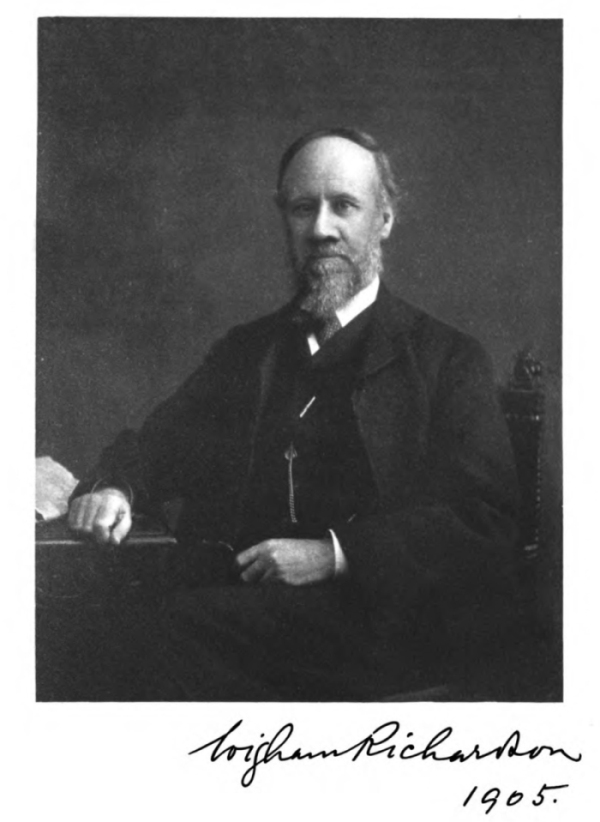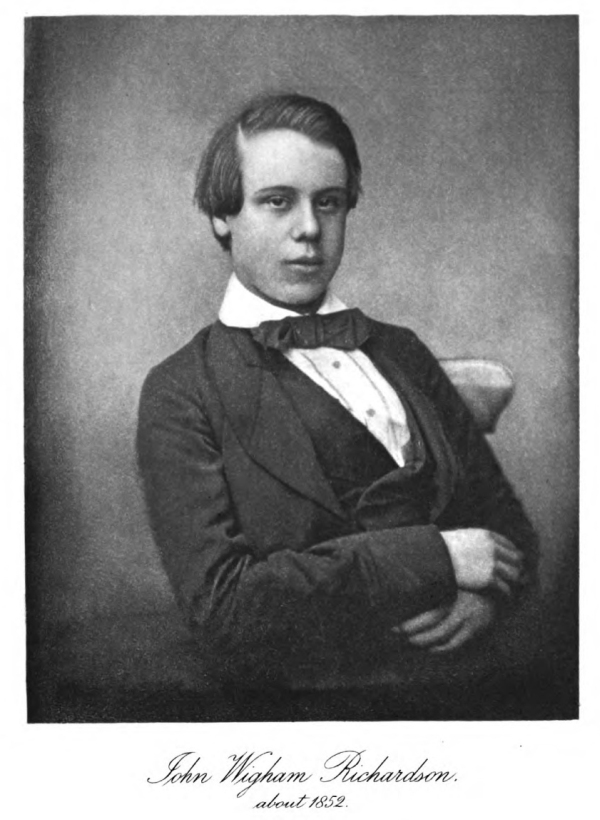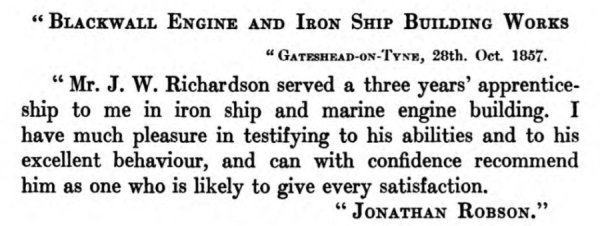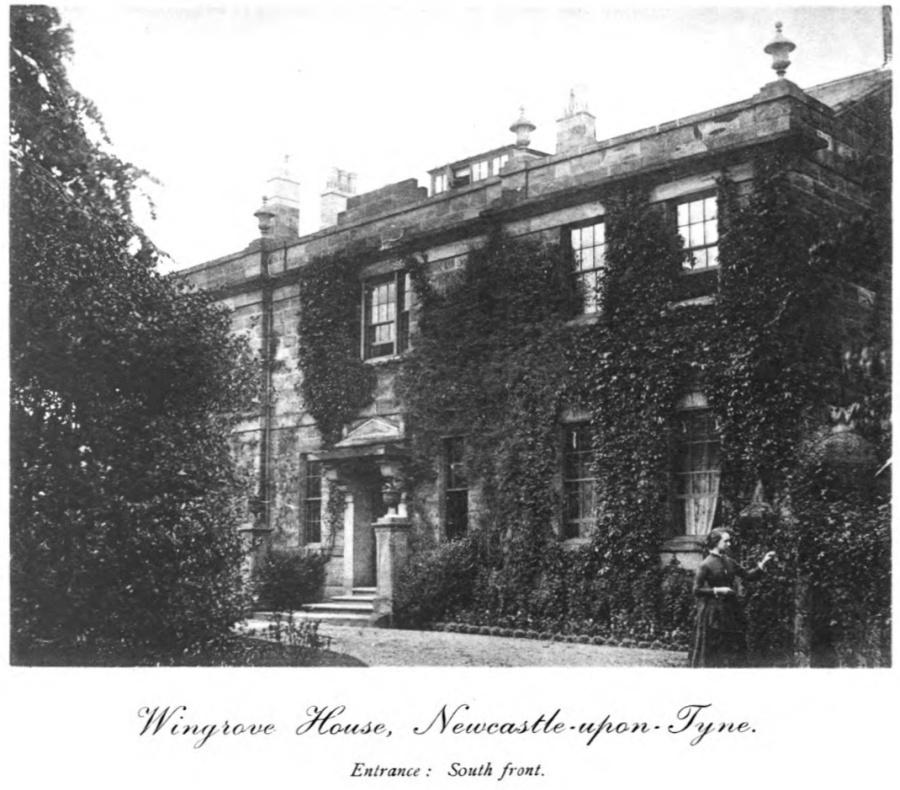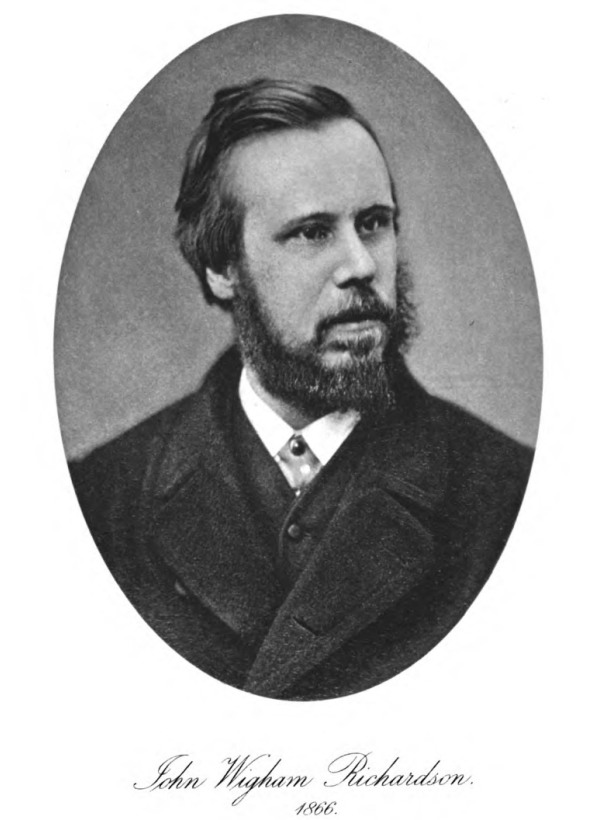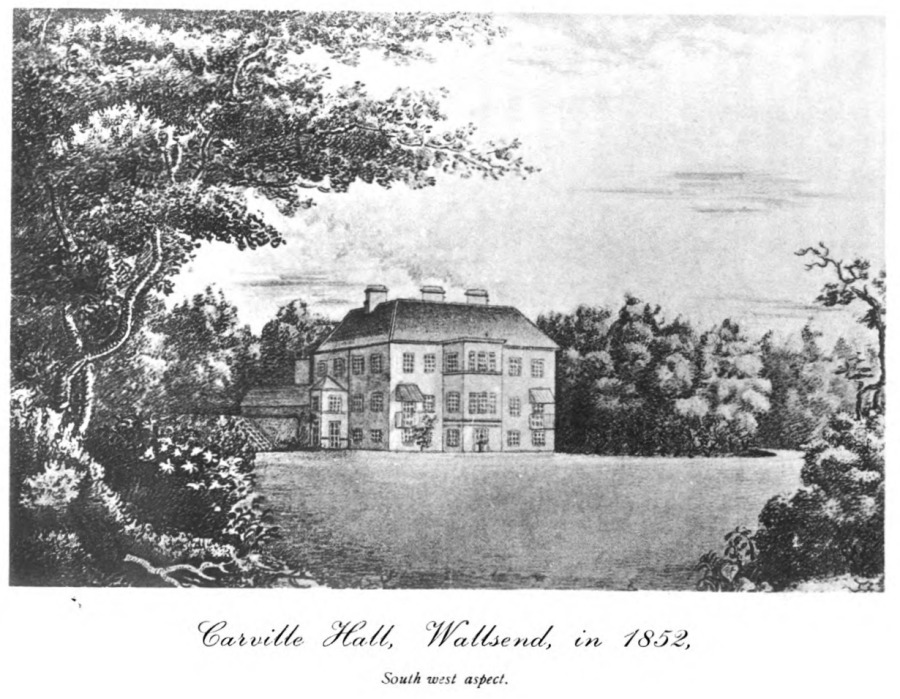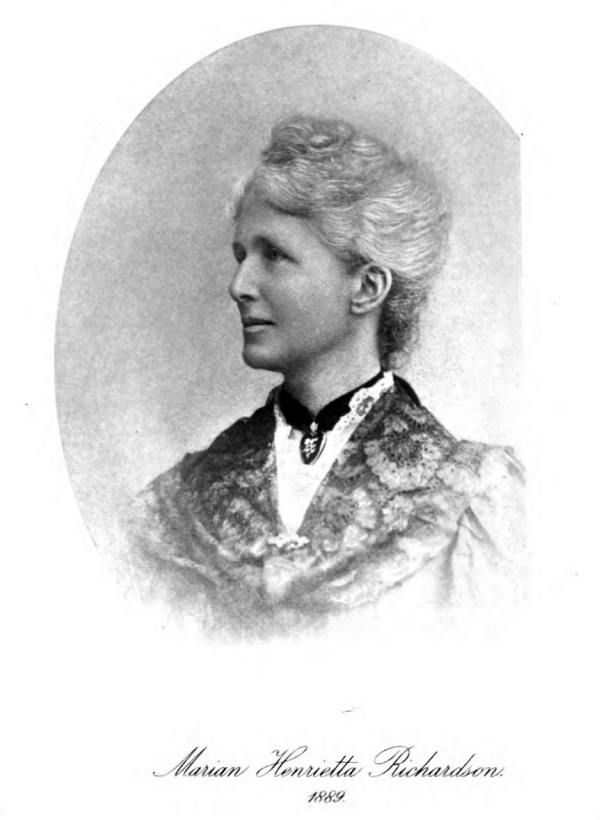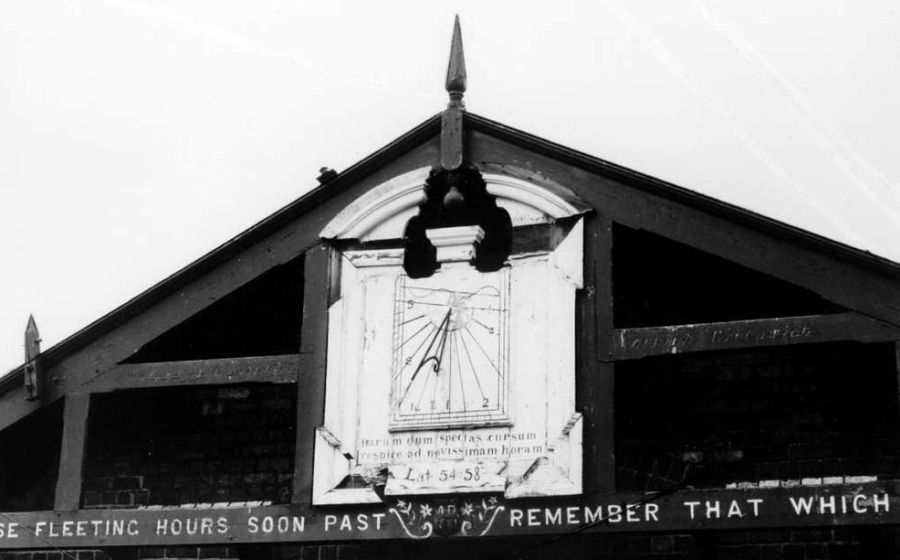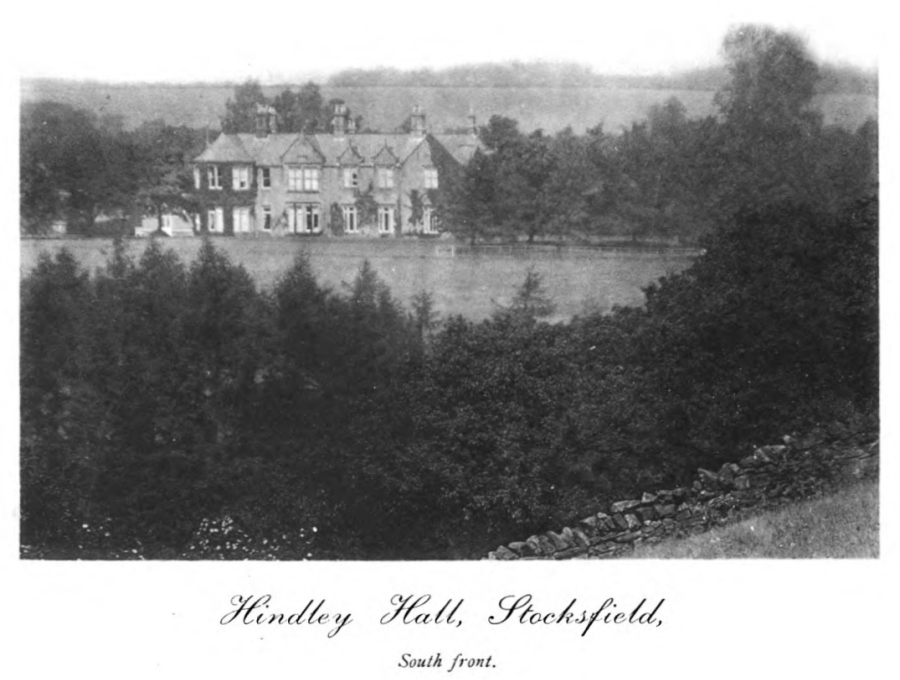Shipbuilder: John Wigham Richardson & Co, Low Walker
|
John Wigham Richardson: (1837-1908)
Image from "Memoirs of John Wigham Richardson, 1837-1908" John Wigham Richardson was born on the 7th of January 1837, at Torquay in Devon, where his parents were spending the winter on account of his father's delicate health. His father Edward Richardson was in the leather tanning business and was an established businessman in Newcastle. He and his wife Jane Wigham were devout Quakers or Friends and lived at No 6 Summerhill Grove, off Westgate Road, in the west of Newcastle. The Wigham family had originally come from the Scottish borders but settled in Newcastle. John grew up at Summerhill and had a varied education sometimes at home, sometimes at school and sometimes while staying with relatives near Carlisle. His health was considered to be fragile as well and west coast air was considered beneficial. He had an interest in history and politics from an early age. In 1850 he was sent to the Friends' School in York where the educational regime was rounded rather than competitive and formal lessons were mixed with afternoon walks to take in the fresh air. In 1852 the family moved from Summerhill Grove to Beech Grove next to Elswick Park.
Apprenticeship In 1853 he expressed an interest in shipbuilding and studied ship draughting from Senhouse Martindale in Liverpool. Martindale was a convinced Friend and had been promoted from being foreman at HS Edward's Dry Docks in South Shields to be a Lloyd's Surveyor at Liverpool. On returning to Newcastle at the end of 1853 John arrived during an outbreak of cholera and was infected himself. Fortunately he managed to make a good recovery in only a few days, thanks to some good care and attention. John was then due to begin an apprenticeship and it was expected that this was to be with the engineer Robert Hawthorn a near neighbour of the family who had a large engine works at Forth Banks near the riverside. However when his father approached Robert he made it very clear that it would be a mistake to go into his large works and he recommended the steam tug and engine building establishment of Jonathan Robson at "the low end of Gateshead". As well as an iron shipbuilder Jonathan Robson was also an engineer and as well as providing engines for his ships he made and maintained engines for pumping stations, collieries etc. John served a 3 year apprenticeship with Robson, finishing at the end of 1856 before he started college in London to study languages and mathematics.
Above references were written some years after Family financial problemsA couple of bank failures around this time caused problems for the family so they moved out of Beech Grove to smaller premises in Rye Hill. Then at the end of his studies in London John went to Hawthorns to work for no wages but to gain yet more experience. The years immediately following the financial crisis of 1857 were a time of great industrial depression and Hawthorns had to pick up orders where they could find them so John worked on machines for cutting tobacco, flour grinding machines and cooling apparatus for breweries. However he did manage to get paid in the end and worked there until 1860. South Ashfield In 1860 the family moved to South Ashfield a house immediately to the south of The Gables on Elwick Road. Both parents were to die there and are buried in the Westgate Hill cemetery. Setting up in business In 1860 John resigned from Hawthorns and with about £5000 capital from his father he determined to set up in business as a shipbuilder. He took out a lease on a vacant shipyard site at Low Walker and paid Losh, Wilson & Bell £1500 for the lease of the yard, including all buildings, an engine and boiler and a considerable amount of shafting. This site had been occupied by a London firm Miller, Ravenhill & Salkeld between 1851 and 1855. Then by John Vernon beween 1855 and 1857. So the yard had been laying idle for a few years. Losh, Wilson & Bell were chemical manufacturers and iron makers, based in Walker and owners of the Walker Ironworks. Charles Denham Christie Charles Denham Christie was a manager to Alexander Denny the iron shipbuilder at Dumbarton and in 1857 he married Alice Pond the daughter of a retired Anglo-Indian and went to Brighton for their honeymoon. On the first morning he read in the papers that the Western Bank of Scotland, in which all his savings were invested, had failed and that his employer had failed as well, so he started his married life penniless and out of work. In the next two years he was able to get some employment with Brunel in connection with the GREAT BRITAIN and then joined the shipbuilder Adamson at Willington Quay. John had been introduced to Charles Denham Christie by a mutual friend and he started with Denham Christie as his manager on the understanding that if all went well they would go into partnership together. Denham Christie was renowned for careful and beautiful ship designs. Early days in business Their first contract was for a small ferry to run between the IOW and Portsmouth and after that they came to a standstill. The financial crisis of 1857 had not yet ceased and further work could not be found. Eventually a contract was agreed with John Smurthwaite of Sunderland to build the AMBROSE but it took two years of legal battles to get paid. Staying in business was a struggle. John had by then assumed the role of travelling salesman and financial controller with the design and build being handled by Christie. In fact in 1862 John hand delivered the paddle steamer ISABELLA to the River Dnieper in Russia and on the way back via Genoa signed a contract with Rafaelle Rubattino for the ELBA. His father Edward Richardson died 27/11/1863 at South Ashfield. Marriage & Wingrove House John married Marian Thol 12/04/1864 at St Matthew's in Brixton, London and after a honeymoon in France & Italy with a stop off for some business meetings they settled down in a house in Rye Hill, Newcastle. Their first son Philip was born in January 1865 and in the autumn of 1866 the family moved to Wingrove House in the west end of Newcastle. They would live there for 36 years.
Carville Estate In 1873 the firm purchased the Carville Estate to provide land for building housing for his workers, houses that the workers could own over time. They built 200 houses and also induced induced others to build to a still greater extent. There were also allotments of vegetable gardens that the workers could rent. the cost of the estate was £30,000 and over the next 13 or 14 years they recouped £60,000 and provided comfortable & affordable accommodation for their workers.
|
